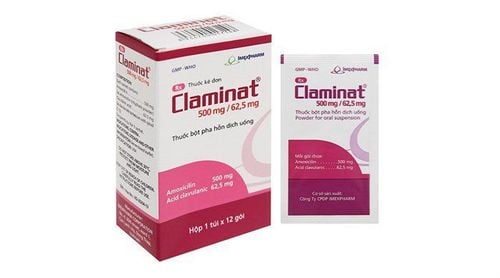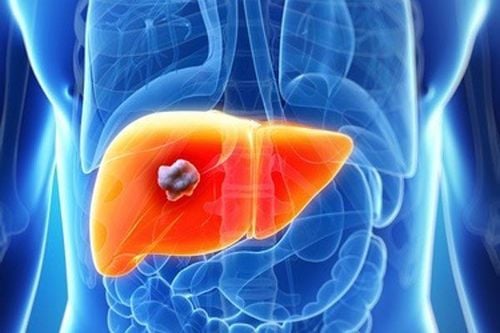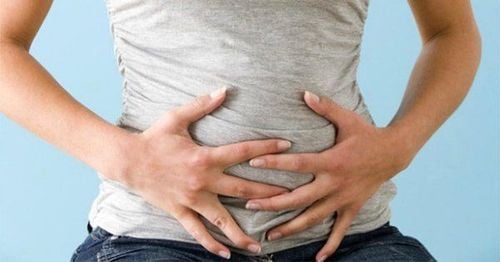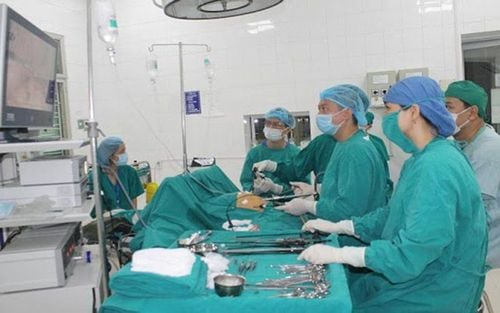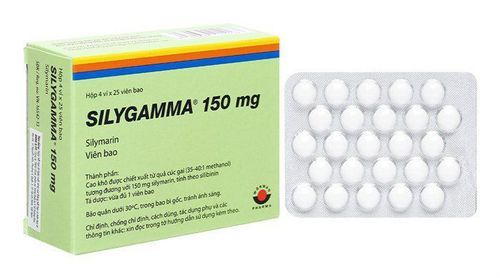This is an automatically translated article.
Currently, there is no specific treatment for choledochal cysts. The main treatment method is laparoscopic surgery to remove the segment of the common bile duct containing the cyst, then re-establish biliary circulation by suturing the hepatic duct with the small intestine and duodenum. With this surgical method, after surgery, bile still circulates into the intestine to play the role of food digestion.
1. What is a common bile duct cyst?
The common bile duct cyst is not a biliary cyst but is a congenital anomaly of both the intrahepatic and extrahepatic bile ducts due to irregular dilation of the biliary tree. Common bile duct cysts, if untreated, often have many dangerous complications such as: cholangitis, biliary obstruction, gallstones, long-term pancreatitis, which turns into cirrhosis (with a rate of about 30%), and cancer of the bile ducts. bile (with a rate of about 9-28%).
Common bile duct cysts are divided into 5 types as follows:
Cysts are usually sac-shaped or rhombus-shaped, appearing in the common bile duct (accounting for the majority with 80-90% of cases). The cyst is a pedunculated diverticulum, protruding from the wall of the common bile duct, and is connected to the common bile duct through a small duct. The cyst originates in the lower part of the common bile duct, below D2 of the duodenum. Mixed cysts, have many different shapes. This condition is caused by large dilation of the intrahepatic and extrahepatic biliary system. Cysts appear only in the intrahepatic biliary system.

5 dạng nang ống mật chủ
2. Causes and symptoms of common bile duct cysts
The cause of common bile duct cysts is a congenital pathology, these malformations form right from the time of conception. In addition, the most supported hypothesis is that the pancreatic bile duct still exists, causing pancreatic juice to back up into the bile duct system, causing long-term dilatation of the common bile duct.
Symptoms to identify common bile duct cysts include:
Jaundice, yellow eyes: Common in infants and young children. Jaundice in newborns appears early, the degree of jaundice will depend on the severity or mildness of the disease. Abdominal pain: Abdominal pain that recurs many times. Abdominal pain and jaundice are two common symptoms to identify a common bile duct cyst. Felt a tumor in the abdomen. Fever: In case of complications of biliary tract infection, biliary peritonitis. Currently, there is no specific treatment for the disease. The treatment method for choledochal cyst is laparoscopic cholecystectomy, then re-establishing biliary-enteric circulation by suturing the hepatic duct with the small intestine and duodenum. With this surgical method, after surgery, bile still circulates into the intestine to play the role of food digestion.
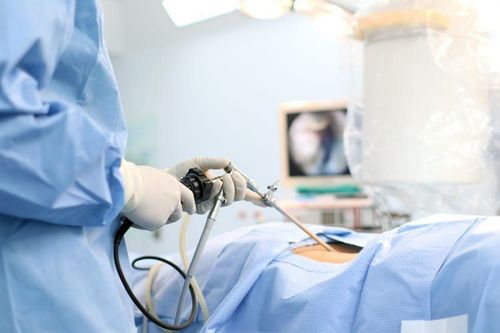
Nội soi cắt nang ống mật chủ là phương pháp điều trị đặc hiệu
3. Laparoscopic choledochal cystectomy
3.1. Advantages and disadvantages of laparoscopic choledochal cystectomy Advantages: Laparoscopic choledochal cystectomy has the advantage of overcoming the limitations of open surgery such as: less pain, less damage to the abdominal wall. Wounds heal quickly and do not leave bad scars. Disadvantages: This method has the disadvantage that it is difficult to perform because the surgical instruments must be crowded together at one entrance, so it needs to be done by skilled doctors who are well versed in the use of laparoscopic surgical instruments. to take full advantage of this surgical approach. 3.2. Indications and contraindications for laparoscopic surgery Indications for laparoscopic cholecystectomy: group I, group II, group IVa and IVb.
Contraindications for laparoscopic cholecystectomy in cases of: biliary peritonitis or septic shock; have concomitant cardiovascular diseases; chronic respiratory diseases; old and weak health; have a history of previous abdominal surgery.
3.3. Steps to perform surgery Step 1: Prepare surgical instruments; General examination and endotracheal anesthesia for patients. Step 2: Place 2 10mm trocars, 1 at the navel, 1 below the breast; 2 5mm trocars, 1 below the right flank and 1 at the intersection of the right midaxillary line with the transverse line from the navel.

Tiến hành đặt trocar trong phẫu thuật
Step 3: Check the condition of the liver and the common bile duct cyst, release the gallbladder from the gallbladder bed, if the size of the cyst is large and tight, it is possible to open the gallbladder to drain the bile in the cyst and then remove the cyst. . Step 4: Repeat the bile-intestinal circulation in the Roux-en-Y fashion, the jejunojejunostomy is performed intra-abdominal or extra-abdominal through a small opening in the abdominal wall below the right flank. The hepaticojejunostomy will be performed laparoscopically with separate sutures or the whole is done through laparoscopy. Step 5: Examine the abdomen, place a drain under the liver, close the trocar holes and the small opening of the DSP abdominal wall. 3.4. Monitoring after surgery After surgery, it is necessary to:
Monitor blood pressure, pulse, temperature, breathing rate in the first 6 hours. Monitor Volker drainage Subhepatic drainage for bleeding and bile. Assess the state of the abdomen is soft, flat, painless. 24 hours later, the blood amylase, urine, red blood cells and hemoglobin should be checked again. 5 days later, the test again checks the bilirubin in the blood. After 7 days, check the biliary tract after surgery.




